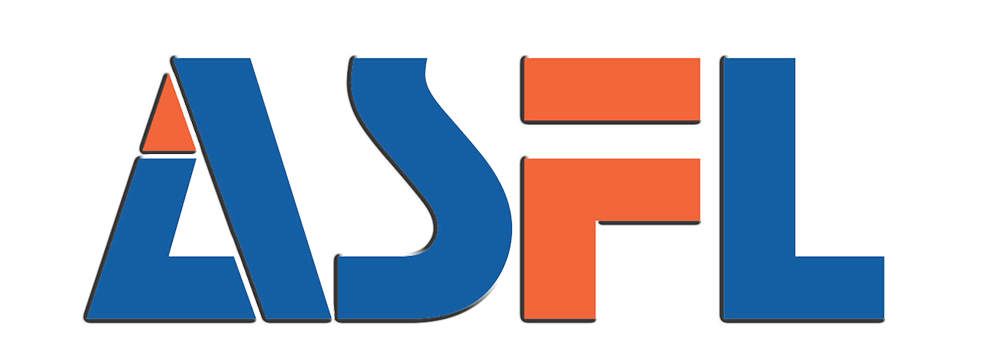Sustainability in Drink Filling Machines: Reducing Environmental Impact
Energy Efficiency in Beverage Filling Technology Reduces Environmental Impact
Today's drink filling machines use about 35% less energy than what was standard back in 2018. This improvement comes from better servo motors and systems that recover heat during operation. The variable speed drives are pretty smart too they change how much power gets used depending on what the production line actually needs, which means wasting way less energy when things aren't running at full capacity. Some tests showed this cuts down idle energy waste by nearly 28%, as reported in the Food Engineering Journal last year. And looking at bigger picture stats from the Beverage Technology Sustainability Report for 2024, all these upgrades are keeping around 12,000 tons of carbon dioxide out of the atmosphere every year just from mid sized bottling facilities alone.
Water and Material Conservation Through Closed-Loop Systems in Drink Filling Machines
Modern closed loop rinsing systems manage to recycle around 90 to 95 percent of the process water they use, bringing down the amount needed for each bottle from about 1.5 liters all the way down to just 0.2 liters. When combined with smart lubrication technology powered by artificial intelligence, manufacturers see their grease consumption drop by roughly 40% while still maintaining good performance levels. The introduction of hybrid filling nozzles adds another layer of improvement too. These devices help stop spills during operation, which translates into significant savings for plants running at full speed. Some facilities report cutting waste by as much as 8,000 gallons of product every month thanks to this simple but effective innovation.
Use of Recyclable Materials and Modular Designs to Extend Machine Lifespan
More and more manufacturers are turning to materials like recycled stainless steel containing around 70% industrial scraps, along with self lubricating plastics that cut down on oil messes. They're also incorporating parts that can be swapped out quickly when needed. These changes really make a difference. Equipment tends to last about six to eight extra years, and factories save roughly 18 tons of waste throughout each machines life cycle. According to data from the EcoFilling Initiative, most plants (around three out of four) find that upgrading with modular parts helps them hit those 2030 green goals without having to replace entire production lines.
Case Study: Carbon Footprint Reduction in European Bottling Plants Using Green Filling Systems
One German mineral water company managed to cut down on emissions by nearly a third over just 18 months. They did this through several changes including installing solar powered filling lines that generate around 2.1 MW each year, switching to lighter weight PET bottles that work with their current machines, and using cleaning products that break down naturally. These combined efforts slashed what are called Scope 2 emissions by about 820 metric tons every year. Pretty impressive considering they still manage to fill 40 thousand bottles an hour. The case shows it's possible to implement major green improvements without sacrificing production speed or efficiency.
Smart Technology Integration: IoT, AI, and Digital Transformation in Filling Systems
Digital Transformation and Smart Manufacturing Technologies Reshape Beverage Production Lines
The combination of IoT and AI technologies is really pushing forward the Industry 4.0 movement within the beverage manufacturing sector. Modern digital systems now allow manufacturers to maintain tight control over fill accuracy with just a half percent variance, while also improving production rates through cloud computing analysis. What makes these intelligent platforms so valuable is their ability to adjust parameters automatically whether dealing with fizzy drinks or still beverages. Factory tests have demonstrated that this kind of automation can cut down on equipment changeover times by around two thirds according to recent industry reports from early 2024.
IoT Connectivity and Real-Time Monitoring Enhance Operational Transparency
IoT-enabled filling machines transmit over 15 performance metrics per second—including motor torque and seal integrity—enabling near-perfect operational oversight. This real-time visibility supports 99.8% consistency in fill volume and allows dynamic power scaling during low-demand periods, minimizing energy waste without sacrificing output quality.
AI-Powered Automation in Beverage Production Enables Predictive Maintenance
Neural networks analyze vibration and thermal data to predict bearing failures up to 72 hours in advance. One leading water bottling plant achieved over 1,200 hours of continuous operation using AI diagnostics that correlate historical maintenance records with live sensor inputs, significantly reducing unplanned downtime.
Machine Learning Optimizes Cleaning Cycles and Minimizes Downtime
Deep learning algorithms evaluate 18 types of residue and production schedules to optimize CIP (Clean-in-Place) cycles. By adjusting nozzle configurations and cycle duration, these systems reduce water use by 25% per sterilization while ensuring FDA-grade hygiene standards are consistently met.
Automation and Precision: Boosting Speed and Consistency in Drink Filling Machines
Automation Levels in Modern Filling Lines Achieve Over 40,000 Bottles Per Hour
Fully automated drink filling lines now exceed 40,000 containers per hour with sub-1% fill variance. Robotic arms integrated with monitoring systems streamline handling for carbonated drinks, juices, and viscous products alike. Industry benchmarks show these lines operate 52% faster than semi-automated systems from 2020, supporting large-scale seasonal demand efficiently.
High-Precision Sensors Ensure Consistent Fill Volumes Across Batches
Laser-guided sensors and load cells measure liquid levels with ±0.5% accuracy, adapting to foam and temperature fluctuations. This precision prevents overfilling, which previously wasted up to 3% of raw materials (Food Production Journal, 2023), directly improving yield and profitability while ensuring regulatory compliance.
Case Study: U.S. Soft Drink Manufacturer Increases Output by 35% With Robotic Integration
A Midwestern bottling plant upgraded to an automated filling system with IoT-enabled quality control, achieving:
- 29% faster format changeovers for limited-edition flavors
- 98.6% fill accuracy across 12 oz aluminum cans and 2L PET bottles
- 35% annual output growth with 18% less compressed energy
This transformation reduced downtime costs by $214,000 per year and maintained adherence to FDA fill-level regulations.
Flexible and Modular Design: Adapting Drink Filling Machines to Diverse Needs
Adaptive Drink Filling Machines Support Rapid Changeovers for Craft and Niche Brands
Modern filling machines with modular designs can change production formats in less than ten minutes thanks to features like self adjusting clamps, interchangeable nozzle plates, and programmable logic controller settings based on recipes. The flexibility these systems offer explains why we've seen a 38 percent rise in limited edition drinks hitting shelves since 2022 according to Beverage Marketing Corporation stats. Small scale breweries and new functional drink companies especially benefit from staying ahead of trends. Take kombucha makers for example they often need to alternate between 12 ounce glass bottles and liter sized plastic containers throughout their daily operations. With adjustable conveyor belts and precision controlled fill heads, this format switching becomes part of regular workflow rather than disruptive downtime.
Modular Designs Allow Seamless Integration for Diverse Beverage Types
Modern filling equipment can manage all sorts of different viscosities these days, ranging from plain old water at around 1 centipoise right up to those super thick smoothies that hit about 5,000 centipoises. These machines typically rely on switchable valves to handle such diverse products. The pressure compensating models keep things pretty accurate too, holding within half a percent tolerance when dealing with carbonated drinks. And there are also those special hygiene friendly connectors that let manufacturers swap out between milk based products and plant based alternatives without any cross contamination issues. Looking at industry trends, roughly two thirds of processing facilities today operate across five distinct product lines or more, which is actually up quite a bit from just over 40% back in 2018 according to recent reports from Food Engineering. This flexibility saves money too, cutting down initial investment costs anywhere between 30 and 40 percent compared to having separate production lines for each item.
Trend: Growth in Personalized Packaging Drives Demand for Flexible Filling Solutions
Seasonal flavors are popping up everywhere these days, along with regional versions and all sorts of custom packaging options. This trend has really bumped up the need for filling machines that can switch settings quickly during production. According to recent industry data, more than half the beverage makers in North America want their equipment to handle those tiny containers below 500 ml mark. The latest systems come packed with things like machine vision technology and robotic sleeve applicators, which means companies can actually afford to run those special edition batches without breaking the bank. And get this - experts predict this kind of customization will keep growing by about 19 percent each year until 2030.
Future Outlook: The Evolution Toward Autonomous Drink Filling Technology
Shifting Trends in the Beverage Manufacturing Industry Toward Full-Line Autonomy
By 2025, 67% of beverage manufacturers plan to adopt self-regulating production lines (McKinsey 2023), driven by labor shortages and the need for consistent quality. Today's advanced filling machines use AI to coordinate bottle handling, lid placement, and inspection tasks autonomously, moving beyond semi-automated systems reliant on manual intervention.
Emerging Role of Digital Twins in Simulating and Optimizing Drink Filling Processes
Digital twin tech lets manufacturers create virtual copies of their whole filling line setups and test how they perform in actual operating conditions. According to research from Capgemini in 2024, businesses that implemented these digital replicas saw waste cut down around 19 percent each year while saving about 12% on energy costs. The software adjusts all sorts of variables including fill speed, pressure settings, container shapes, liquid thickness, and even carbonation levels. This replaces those frustrating weeks spent trying different settings manually. Take carbonated beverages for instance. Soda makers can now run simulations showing exactly how foam will behave during filling. They get to find the sweet spot between getting accurate fills and keeping production moving fast without having to do expensive physical tests first.
Predictions for 2030: Fully Autonomous, Self-Optimizing Filling Lines Powered by AI
According to Gartner's latest predictions, around 40 percent of beverage production facilities should have self-optimizing filling systems installed by 2030. These advanced systems can adjust speed, temperature settings, and pressure levels on the fly during operation. Thanks to edge computing technology, AI driven equipment manages everything from flavor transitions to container size modifications and cleaning routines all by itself. This cuts down those frustrating 45 minute changeover periods we see so often nowadays (as noted in Food Engineering Report 2023). When paired with predictive quality checks, such systems spot tiny leaks or filling mistakes long before finished goods ever reach distribution centers. The beverage industry stands to gain tremendous efficiency gains through these smart, adaptive manufacturing solutions that address real world problems head on.
FAQ
What is the impact of drink filling machines on energy consumption?
Modern drink filling machines have reduced energy consumption by approximately 35% since 2018, thanks to efficient servo motors and heat recovery systems.
How do closed-loop systems work in beverage filling?
Closed-loop systems recycle about 90-95% of process water, significantly lowering water use per bottle.
What role does AI play in predictive maintenance for drink filling machines?
AI analyzes data to predict mechanical failures, thereby reducing unplanned downtime and extending continuous operation periods.
How are drink filling machines adapted for handling diverse beverage types?
Machines integrate modular designs and switchable valves to accommodate products of varying viscosities, from water to thick smoothies.
What are digital twins in the context of drink filling processes?
Digital twins help simulate and optimize filling line operations, reducing waste and enhancing energy efficiency.
Table of Contents
-
Sustainability in Drink Filling Machines: Reducing Environmental Impact
- Energy Efficiency in Beverage Filling Technology Reduces Environmental Impact
- Water and Material Conservation Through Closed-Loop Systems in Drink Filling Machines
- Use of Recyclable Materials and Modular Designs to Extend Machine Lifespan
- Case Study: Carbon Footprint Reduction in European Bottling Plants Using Green Filling Systems
-
Smart Technology Integration: IoT, AI, and Digital Transformation in Filling Systems
- Digital Transformation and Smart Manufacturing Technologies Reshape Beverage Production Lines
- IoT Connectivity and Real-Time Monitoring Enhance Operational Transparency
- AI-Powered Automation in Beverage Production Enables Predictive Maintenance
- Machine Learning Optimizes Cleaning Cycles and Minimizes Downtime
- Automation and Precision: Boosting Speed and Consistency in Drink Filling Machines
- Flexible and Modular Design: Adapting Drink Filling Machines to Diverse Needs
- Future Outlook: The Evolution Toward Autonomous Drink Filling Technology
-
FAQ
- What is the impact of drink filling machines on energy consumption?
- How do closed-loop systems work in beverage filling?
- What role does AI play in predictive maintenance for drink filling machines?
- How are drink filling machines adapted for handling diverse beverage types?
- What are digital twins in the context of drink filling processes?





